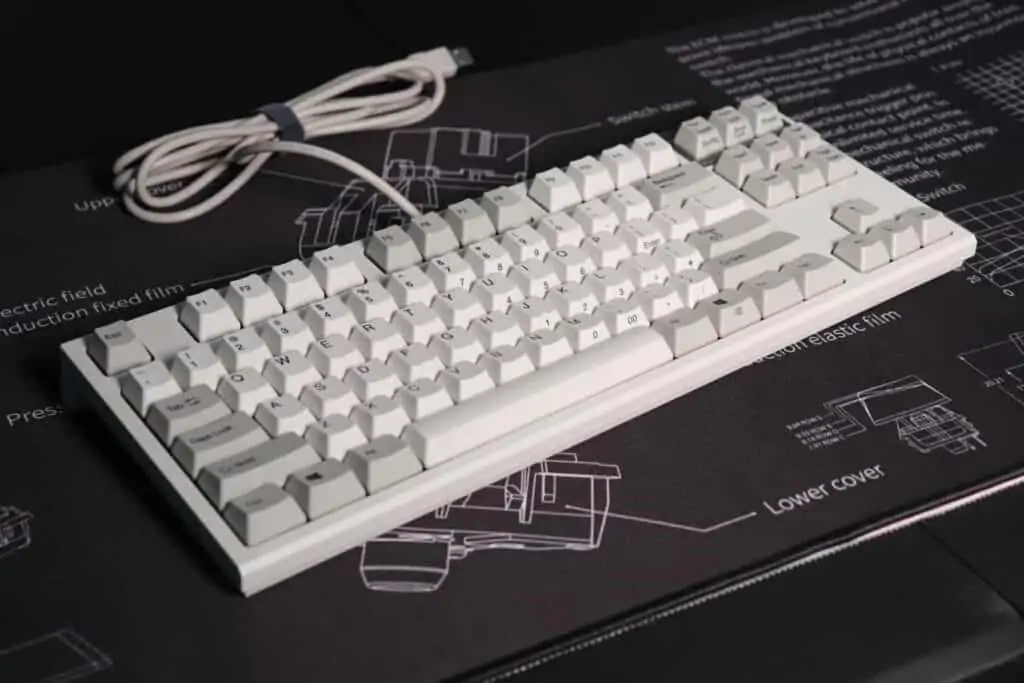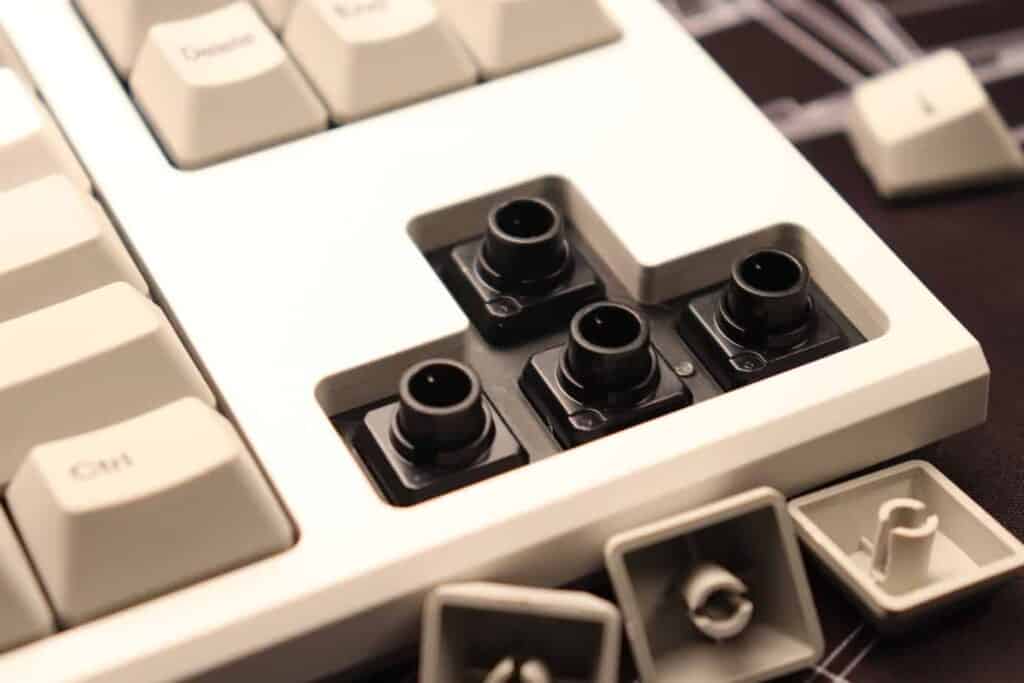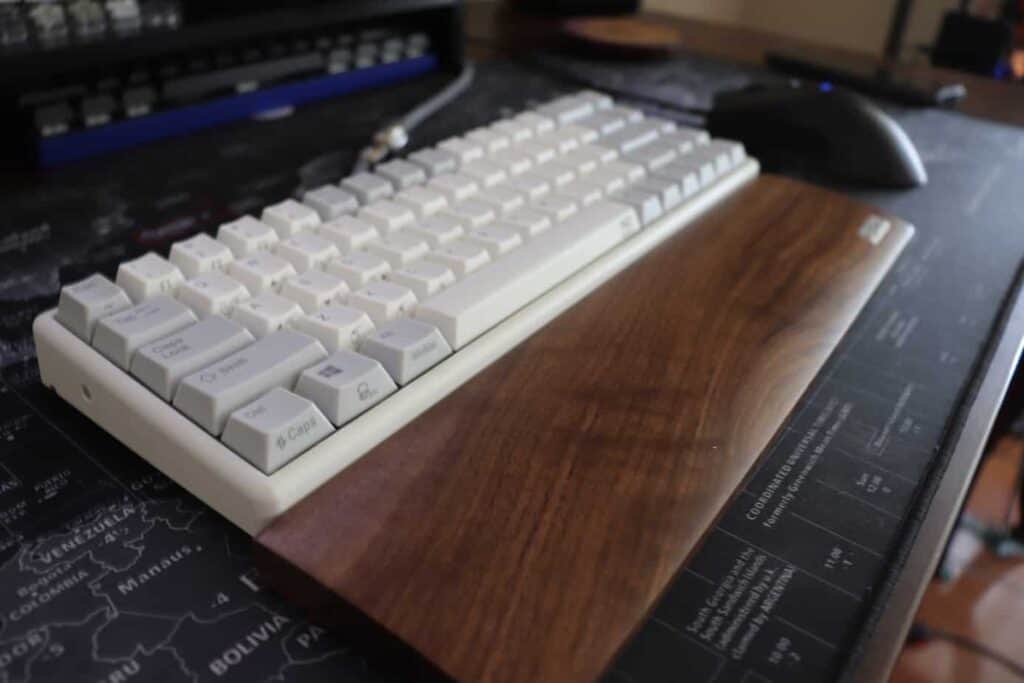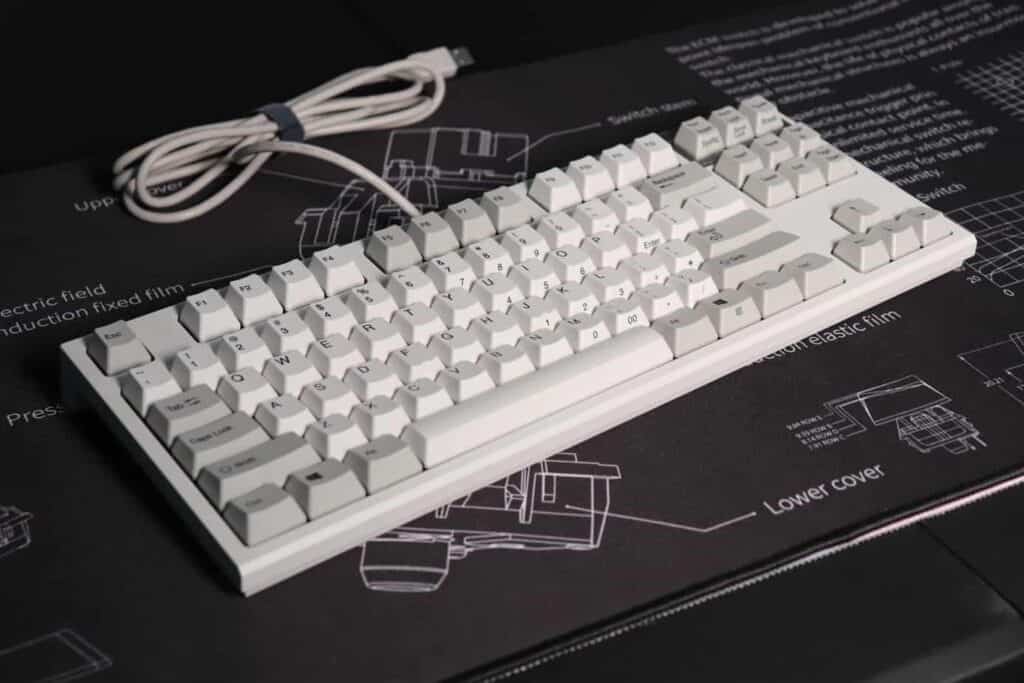Ever since getting into the mechanical keyboard hobby, I’ve been wanting to get my hands on a keyboard with Topre switches, but the price has always been the limiting factor.
Now that I am finally able to try out the Topre Realforce R2, I have to say, I’m pretty disappointed.
The Verdict

As someone who has been wanting to try this keyboard out for a while now, it pains me to say I have trouble recommending this keyboard to anyone.
The keyboard itself feels outdated in a lot ways. Extremely high price point, a non-detachable power cable, and poor stabilizers make this keyboard not satisfying and very clunky to move around.
Perhaps I built up the idea of Topre too much inside my head before purchasing, but the expectations of an amazing product did not get met by the real deal.
The main selling point of this keyboard is the Topre switches, which actuate in a very unique electro-capacitive fashion where no contact is required for the key to get registered.
While I found the Topre switches to be fun and novel to use, they feel similar to Cherry MX Silent switch, but make a high-pitched noise on the upstroke – not my cup of tea.
The overall build quality of the keyboard is pretty good with dye-sublimated PBT keycaps and a unique case design. Instead of the usual box shape, the keyboard has a more sophisticated shape and structure which I enjoy.
The build quality aside, I found the keyboard to be underwhelming, especially considering the steep price point.
I’m sure there are those out there who are willing to overlook the downsides to get a keyboard with Topre switches, but it’s a no from me, personally.
In The Box

Inside the box, there isn’t much, although I do want to point out the box itself does have a nice design to it.
The container comes in a black and red aesthetic that has a high-end feel to it. It’s always nice to see some thought put into the packaging of a keyboard. Most of the time the keyboards are shipped in a plain white box straight from the factory.
Along with the keyboard and box itself, you get a small instruction manual that’s in English and Japanese. It basically walks you through the different shortcuts and settings.
If I planned on using the keyboard over the long-term, I would attempt to memorize the shortcuts because it could make using the keyboard more efficient.
I would have liked to see a keycap puller or a few Topre springs in the box so you could customize the weight of the switches and easily take a look under the hood.
In that regard, I was a little disappointed.
Build Quality

The build quality of the Topre Realforce TKL is quite excellent. The case is made entirely of a plastic construction with a stainless steel plate which makes the keyboard extra rigid.
I admire the attention to detail that put into shaping the case and coming up with a unique design. Many keyboards, especially pre-built, fall into the trap of building their keyboards as rectangular bricks.
The Realforce opted for an right-angle triangular shaped profile with a darker gray accent plate on the top right of the keyboard. The side profile looks as though there are several layers to it, giving it a more interesting depth.
The main downside to the quality is the non-detachable power cable. This is a poor feature that is really difficult to overlook.
A non-detachable cable makes the keyboard more susceptible to breaking at the wire and more difficult to repair. Not to mention, it’s really clunky and difficult to transport.
The keyboard does have a few routing channels at the bottom, so if you want to route the cable more cleanly that is an option.
Another downside is the kickstand angle only has one setting.
Most keyboards at this price point would have two angle adjustments, not to mention there are no rubber feet on the kickstand so the keyboard will slide with the feet up.
For the price, the Realforce TKL overlooks basic functionality that many look for in an expensive keyboard.
The Keycaps
The keycaps are another interesting component. They come in a two-color light gray/dark gray color scheme with black legends.
Topre keycaps also come in their own unique profile, which makes typing on them feel quite interesting.
The keycaps are sort of a mash between Cherry and OEM keycap profiles, which makes them slightly shorter than usual. It’s an excellent shape if you find most mechanical keyboards make you raise your wrists too high when typing.
Coming in a dye-sublimated PBT build, the keycaps are pretty high-quality. There are sub-legends also printed on a few of the keys, so you can preview what keys are on the lower layers.
I was disappointed to find some imperfections on the keycaps, such as a warped shape, inaccurate spacing between keys, and peeling plastic.
While the issues don’t jump out at you, if you take a closer look the issues become more apparent.
The Switches

The switches are the main reason people would consider this keyboard.
While technically rubber dome, the Topre switches actuate via electro-capacitive design, which means it uses a magnetic field to figure out how close the switches are to determine when to register the keystroke.
If you remember the right-hand rule from high-school physics, the concept is very similar. I still remember everyone in my physics class (including myself) trying to conceptualize the idea while making the spinning motion with their hands.
The idea is that they actuate with a contactless design, so instead of touching a metal plate, once they get within a certain distance the key should register. Pretty cool stuff.
In reality, I was a bit disappointed by how they actually felt. The bottom-out feels very rubbery and not very satisfying, and the bounce-back of the switch makes a loud high-pitched noise.
The tactile bump is bit more pronounced than a Cherry MX Brown which I enjoyed, but the bottom-out and sound it produces is not for me.
The Stabilizers
The stabilizers are a big weak point on this keyboard.
While the spacebar feels well-supported and quite satisfying, the other larger keys such as the shift, enter, and backspace do not have dedicated stabilizers.
This makes each keystroke feel rattily and bit unstable. I have difficulty understanding why Topre skipped out on installing stabilizers on these keys, as they impact the typing experience tremendously.
Alternative to the Realforce: The NiZ Plum Atom 68

While there are a lot of other Topre keyboards out there, I’m going to recommend a Topre clone board, the Epomaker NiZ Plum Atom 68. Bear with me here.
The Epomaker NiZ Plum Atom 68, still comes with an electro-capacitive switch design, similar to Topre, but at a much more affordable price point.
While the design of the keyboard is not quite as sophisticated at the Realforce R2, it still comes with PBT keycaps and fixes a lot of the issues.
You get a detachable USB-C cable (which is a big win), multiple adjustment kickstands, stabilizers, and in my opinion – a better feeling switch.
The electro-capacitive switch produces a more satsifying noise and a slightly less pronounced tactile bump. I’ve never felt like I could type faster than with this switch.
Overall, I highly recommend NiZ Plum Atom 68 over the Realforce R2 TKL.
You can find it on Amazon here for an affordable price.
Conclusion

While the Topre Realforce R2 TKL comes with a unique build and high quality design, there are many factors that make this keyboard quite underwhelming.
With a very high price point, this keyboard misses out on too much functionality that you would come to expect in a keyboard such as stabilizers, a non-detachable power cable, and adjustable kickstands with rubber padding.
The typing experience is lackluster and not as enjoyable as a classic mechanical keyboard and in my opinion, gets showed up by a cheaper clone keyboard, the NiZ Plum Atom 68.
While I appreciate the cool case design and hope other keyboard manufacturers follow suit, you can’t skip out on the basics.
